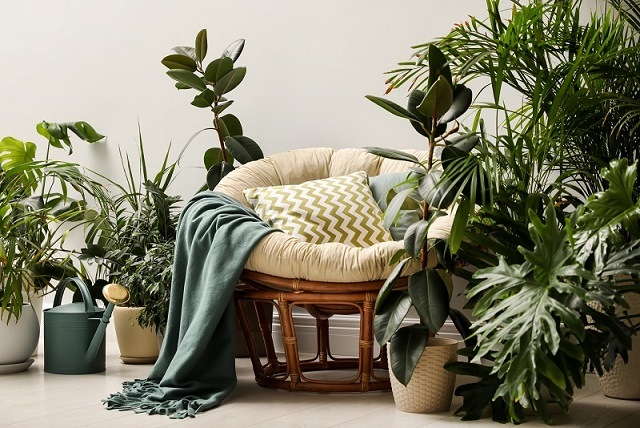Gardening is a relaxing and therapeutic hobby that’s enjoyed by many at home. While most people prefer to plant in their yards, it’s still possible to practice container gardening. That is, they can grow plants in pots and planters.
The advantage of container gardening is that the plants can thrive outdoors and indoors. As a beginner, you can use pots and planters since it’s similar to normal gardening. Here are some tips on using pots and planters and choosing the best one for your plant:
1. Type Of Material
Pots and planters are manufactured with different materials to cater to the plant’s growth. Thus, the planter’s material should be durable enough to withstand environmental elements and physical force. Containers of delicate material can be tied and hung on a rod or placed on a plant wall.
The container’s materials should also be authentic and appealing to the eye. After all, you’d want to admire your green plants thriving in beautiful pots. Likewise, setting up designed containers in business premises such as offices, restaurants, cafes, or even your home brightens and beautifies the room.
The materials available include metal, ceramic, terracotta, wood, and plastic. It’d help to research the material of your choice and ensure it’s suitable for your plants, including DIY metal planter tips.
The container materials also have benefits and drawbacks, which you should consider before purchasing. For instance, metal planters are durable but may be prone to rusting if not handled well. On the other hand, ceramic pots look fantastic but can easily break if subjected to brute force.
2. Size And Shape
Pots and planters come in various shapes and sizes, and choosing one with the right size is important. In addition, you should choose one with enough room for your plant to grow and enough drainage.
Containers that are too small can limit root development and stunt the plant’s growth. On the other hand, a pot or planter that’s too big will look unnatural, and the plant may find it difficult to get water held by the extra soil. A simple rule to help you purchase the right pot is to get one half the size of the plant.
You can plant tall or huge plants in planters that provide enough room. Then, if the pot becomes small for the plant, you can switch it up with another one that’s large enough.

3. Presence Of Holes
Plant pots and planters mostly have a hole at the bottom to facilitate drainage. Holes are important in plant containers because they prevent the soil from holding too much water, which may prevent the roots from growing. It’s been proven that overwatering is among the common causes of houseplant deaths.
It’s, therefore, best that you choose a plant pot or planter with a hole at the bottom for easy drainage. For plant containers without a hole, place a smaller pot with a drainage hole inside and place it a bit higher to prevent the water from accumulating at the bottom of the smaller pot.
Plant containers with holes require a saucer at the bottom to collect the excess water from the soil. It helps reduce the mess created by the pots and planters and the effort of cleaning up. Alternatively, you can place a coffee filter at the bottom of the plant container for air and water to pass through the drainage hole.
4. Cleaning And Maintenance
Pots and planters require cleaning and maintenance like other farm tools and equipment. A simple tip is to clean the pot and planter at least twice weekly. To disinfect the planters and pots, brush off loose soil particles, wash the plant container in soapy water, then rinse it in clean water.
Pot cleaning is important to remove dirt before inserting the plant, especially if it’s new. You should also change the soil once after every two weeks to provide the plant with fresh nutrients for growth and nourishment. That way, your plants will grow well in a clean environment.
5. Practice Plant Care
Besides the pot and planters, you should also consider caring for the plants that grow within them, especially during their growth phase. Although the soil in containers dries up faster than on the ground, you must check its moisture from time to time. Water the plants deeply and consistently as required.
Fertilizing the plants is also important since most soils in pots and plants don’t have access to some nutrients required for the plant to thrive. You can mix slow-release fertilizer and liquid fertilizer, which is added after two or four weeks during its growth period. Ensure you follow the fertilizer’s packaging instructions for proper application and firm and continuous plant growth.
6. The Plant Container’s Location
Once you’ve purchased the planter, determine where to place it. The plant and the container’s size and weight determine its location. It’s also a key factor that determines how your plants will thrive.
Plants that require a lot of sunlight can be placed facing south or west for maximum sunlight. On the other hand, plants that require shading should be placed under a cool shade. Not only will they beautify the room, but they’ll grow well in that space.
Heavy planters should be placed adjacent to the wall to prevent accidents. In addition, pots can be securely fixed on windows, hung on walls, or even rods to prevent accidents and ensure the plant gets the growth requirements it needs.
Conclusion
Pots and planters come in different sizes, materials and designs. If you’re new to container gardening, you can use the above tips to choose the best planters and pots for your plants. Research and experimentation will help you determine which plant container makes gardening more manageable and fun.

